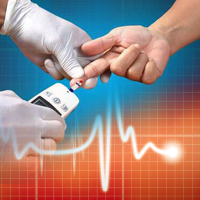Article
Using Non-Insulin Drug Therapies in Type 1 Diabetes: Promising Future
Author(s):
Type 1 diabetes mellitus (T1DM) is treated by necessity with insulin analogues in an attempt to mimic normal physiological insulin profiles. Regardless, this approach is rarely completely successful and most T1DM patients experience fluctuating or suboptimal glucose control, significant hypoglycemia and microvascular tissue complications.

Clinically, type 1 diabetes mellitus (T1DM) is very challenging. Historically known as insulin-dependent diabetes, T1DM is currently treated by necessity with insulin analogues in an attempt to mimic normal physiological insulin profiles. Regardless, this approach is rarely completely successful and most T1DM patients experience fluctuating or suboptimal glucose control, significant hypoglycemia and microvascular tissue complications. Finding treatments that deliver better glycemic control is critical.
The selection of agents used to treat type 2 diabetes mellitus (T2DM) has exploded in the last few years, but T2DM is still a challenge to manage as well. Endocrinologists are employing insulin earlier in their T2DM patients with better outcomes. Could the opposite be true—could drugs used in T2DM be useful in T1DM?
A review in Expert Opinion in Pharmacotherapy examined recent developments, focusing on the possibility that drugs for T2DM may have some utility in T1DM.
The most significant threat facing individuals with T1DM is hypoglycemia. Some of the newer medications approved for T2DM can lower glucose with fewer glycemic excursions. They also help reduce body weight, and have allowed patients to use less insulin. These agents have the potential to help patients with T1DM deal with glycemic challenges also. The injectable glucagon-like peptide 1 (GLP-1) agonist pramlintide remains the only FDA-approved treatment for T1DM along with insulin.
Studies using a-glucosidase inhibitors in T1DM patients indicate that gastrointestinal side effects can be limiting.
Very few studies have been conducted using the dipeptidylpeptidase inhibitors, and most have been small or of short duration. Animal studies indicated that these drugs might promote β-cell preservation, but researchers haven’t been able to reproduce these results in humans.
Studies of GLP-1 agonists and sodium glucose co-transporter 2 inhibitors have been conducted in individuals with T1DM with good results. The authors note that obese, insulin-resistant patients with T1DM may respond to these agents if they are used cautiously. These early study have shown that individuals with T1DM who have frequent and significant glycemic excursions or persistently elevated hemoglobin A1c may respond with little risk of hypoglycemia.
The authors do not endorse widespread use of non-insulin drugs for T1DM at this time, but anticipate that larger studies may find appropriate roles for non-insulin therapies.




